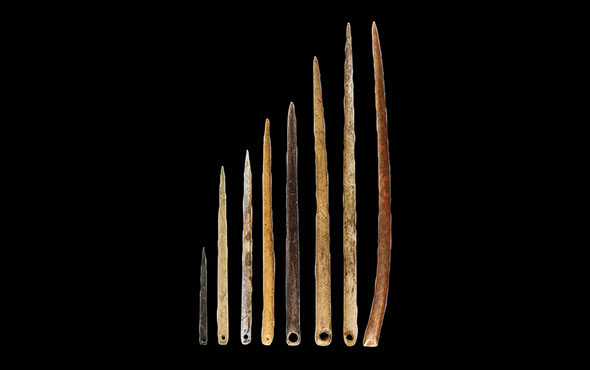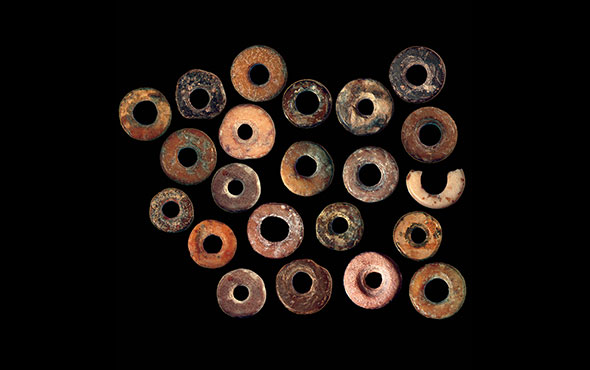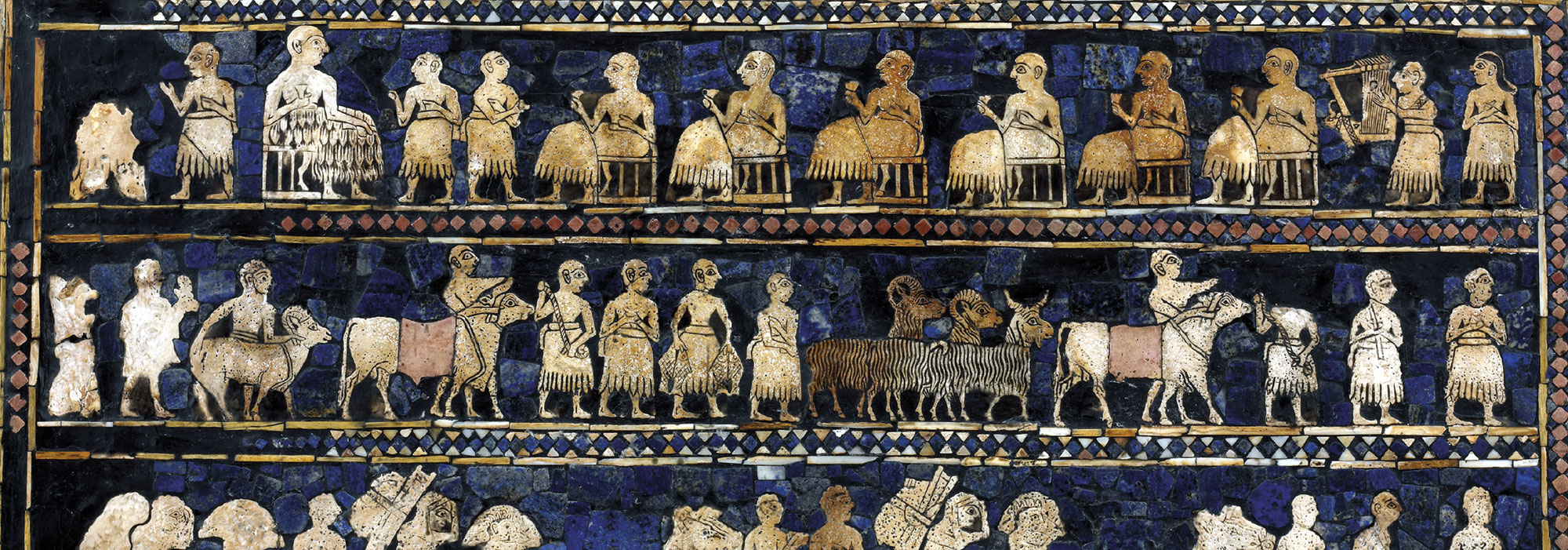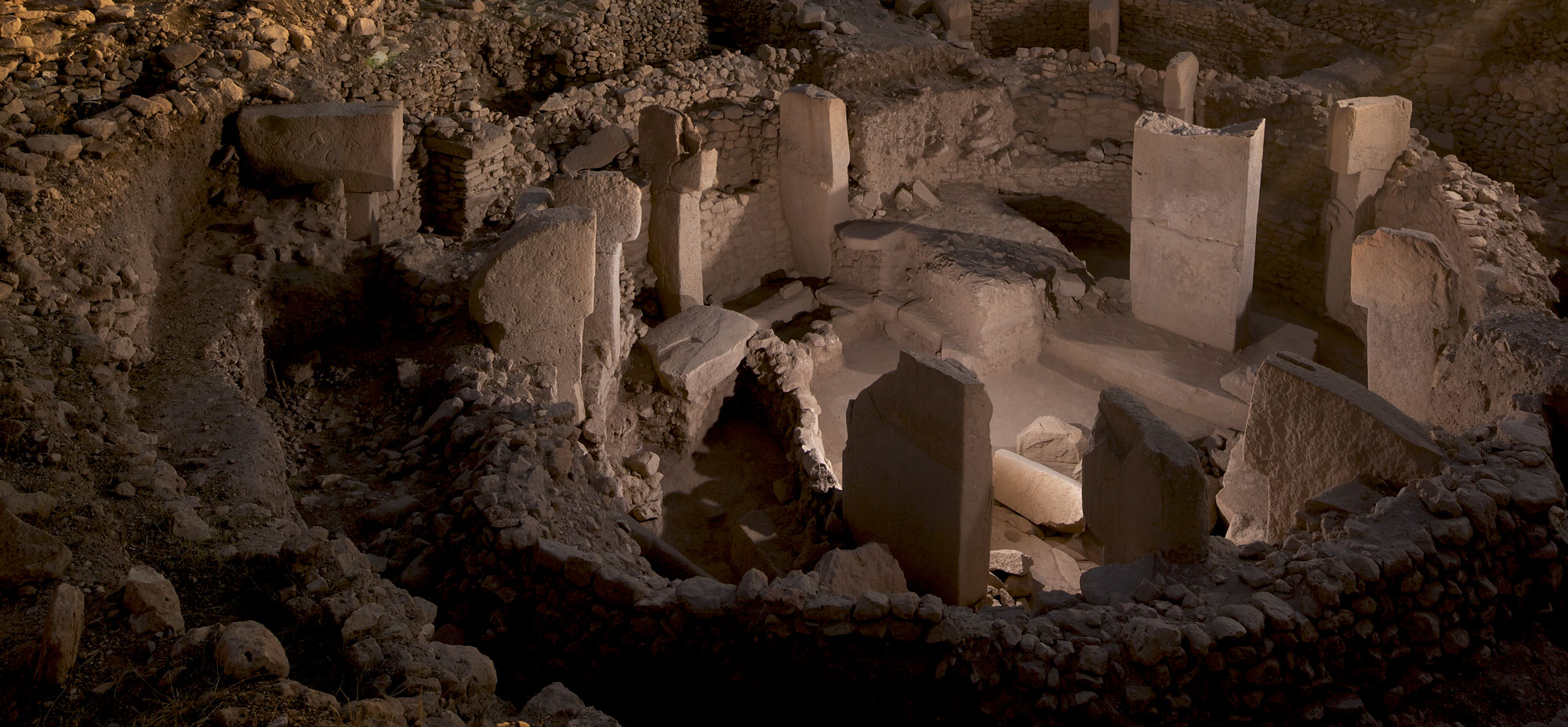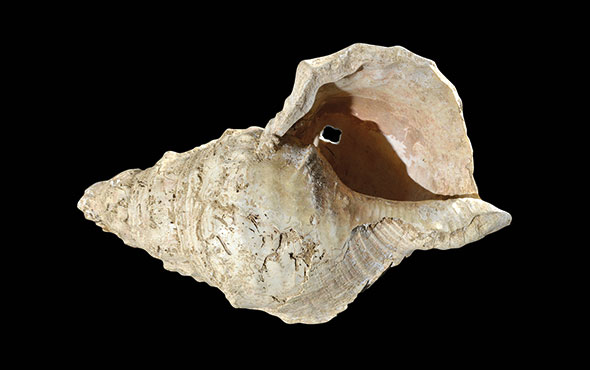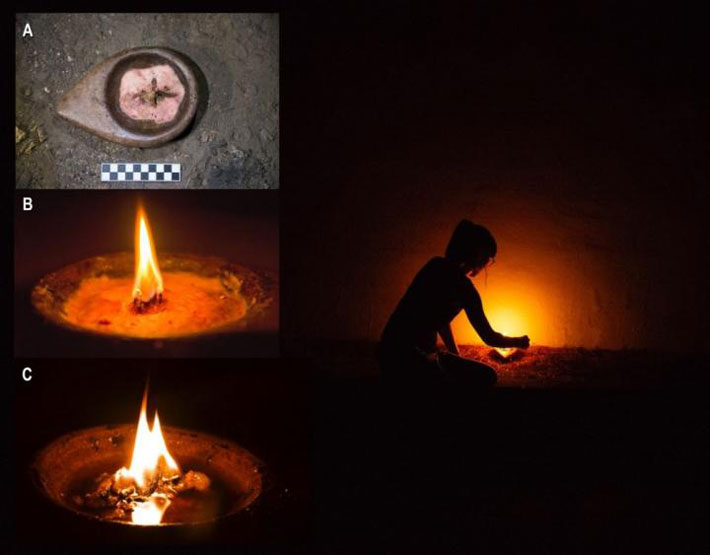
SANTANDER, SPAIN—According to a statement released by the Public Library of Science, a team of researchers led by Mª Ángeles Medina-Alcaide of the University of Cantabria tested possible sources of light employed by Paleolithic peoples to reach the deepest, darkest areas of caves. The lights, including torches made of sticks from five different trees, two stone lamps fueled with animal fat, and oak and juniper burned in a small fireplace, were based upon archaeological evidence uncovered in caves in southwestern Europe where Paleolithic cave art has been found. When the lights were tested in Isuntza 1 Cave, which is located in the Basque region of Spain, the researchers realized that different sources of light were probably used for different situations. Torches made of multiple sticks were found the most useful for exploring and crossing wide spaces, since they project light in all directions and are easy to carry. The torchlight lasted on average about 40 minutes, but required close supervision to keep it lit. Grease lamps were found to produce a similar amount of light as candles, and proved useful for lighting small spaces over a longer period. In contrast, the fireplace put out a lot of smoke and burned out after only 30 minutes, possibly due to the air currents in the test cave. Read the original scholarly article about this research in PLOS ONE. To read about cave art painted deep in the caves of the American South, go to "Artists of the Dark Zone."




